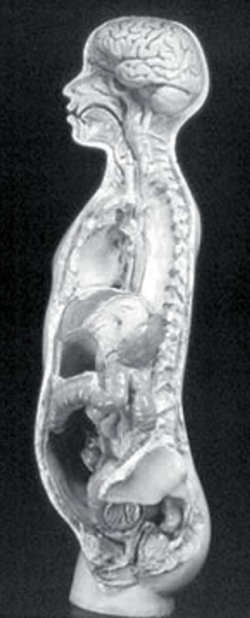Building a body bequest system to manage the most precious resource we have
New Zealand’s first university and medical school is rebuilding its body bequest database.
Warning
This story details what happens to peoples’ bodies once they’ve died if they have bequeathed their body to the University of Otago. Some details may be sensitive for some readers.

Image supplied by Otago University.
The University of Otago has used GETS to recreate a database to provide its medical students with one of the most valuable teaching tools they will ever access – cadavers.
Mark Caldwell, the university's Category Specialist from its Procurement Office says the project has just got underway with a vendor selected, contracts agreed, and the project team identifying milestones and timelines for development and deployment.
GETS has been very helpful for this process.
The body bequest database is not one simple process – it's unusual from end-to-end and contains 3 separate databases adding complexity to any procurement. In its current form, the FileMaker Pro (FMPro) databases are made up of Body Admin, Body Parts, and a Body Archive.
Body Admin records the details of registered body donors and their various contacts and provides an oversight of the donation including registration details. Body Parts records all post death details of a bequest and records how bodies, and their parts, are used, stored, maintained and disposed of. And Body Archive is the final resting place of a bequest record once the body is fully disposed of and no longer has any active parts in our system.
"This is not something commonly used across the globe, so we were unsure who to approach. Through using GETS we were able to get the attention of several companies, all of whom had useable solutions for replacement of FMPro.
"Having all the information in one place and being able to assess the applications and compare like with like was extremely useful in narrowing down to the successful tender," he says.
The university's procurement team managed the GETS process for the project team, provided tender assessment documents, and were responsible for ensuring a robust and fair evaluation process.
"We would've struggled to get to the successful tender without their assistance in the evaluation process," says Mark.
Mark says success for this project is a fit-for-purpose, modern system that automates and digitises the management of cadavers and body parts in compliance with the Human Tissue Act 2008, streamlines and automates internal processes to reduce manual and duplicate work, and reduces cybersecurity risk.
"Once completed it will mean the university will be able to continue to provide high-quality, best practice medical, dental and physiotherapy training using cadavers, ensuring our students have access to the best anatomical resource available – the human body.
"The public benefit from knowing New Zealand-trained doctors are learning anatomy with the real thing rather than by textbook or two-dimensional models.
"Our donors, and potential donors, benefit by being able to continue to satisfy their altruistic desire to donate their body to science, knowing the Body Bequest Programme is robust and well managed," Mark says.
- The body bequest database has existed since the mid-1990s in an electronic form.
- Prior to this, body bequests and receipts were managed entirely on paper.
- The university recorded its first official altruistic bequest, via registered donation, in 1943.
- The university's first recorded body receipt was in 1876.
- The current database holds records for more than 7,000 registered donors, just over 2,000 of these are Accepted – Assumed Still Alive (ie registered to come to us when they die).